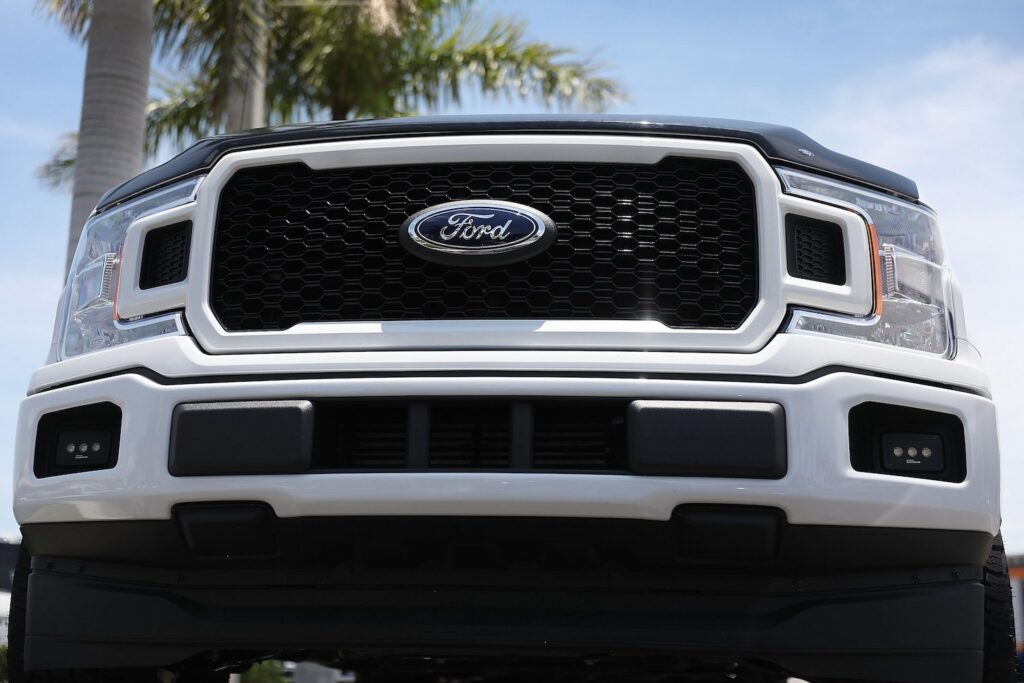Ford continues to lose a lot of money on electric vehicles like the F-150 Lightning and Mustang Mach-E. New tariffs on Mexico and China—which may or may not go into effect—as well as the elimination of former President Biden’s EV incentives are not likely to help. The silver lining is that Ford still prints money on its gas-powered cars, so the company overall remains profitable and can use that money to fuel its continued pivot to electrification, where it thankfully seems to remain committed.
For the full year of 2024, Ford posted a net income of $5.9 billion on adjusted earnings of $10.2 billion. Its electric vehicle business, however, lost $5.1 billion, even worse than its loss of $4.7 billion the year prior. It expects to lose even more, $5.5 billion, on EVs in 2025.
Shifting to an entirely new type of automotive platform requires a lot of upfront research and development, supply chain, and marketing spend. Automakers have to reckon with basic economies of scale. Ford needs to sell a lot of electric cars in order to recoup its investment and start making money on each vehicle, but the cars need to be affordable for people to actually buy them. In the United States, the only electric vehicle maker to actually start seeing profits on each vehicle is Tesla, and that company started by selling luxury cars to wealthy tech executives, even still living on the precipice of bankruptcy for years. Losses are pretty much guaranteed for years.
In the past, there was concern that automakers like Ford and General Motors were only paying lip service to electrification. During President Trump’s first administration, for instance, GM supported his plan to eliminate California’s heightened emissions standards. The gas-powered vehicle business has been very profitable for a long time, so legacy automakers have not had an incentive to go electric. It is the whole Innovator’s Dilemma issue. Whatever you want to say about Tesla CEO Elon Musk, he did help force this transition.
GM is in a much different place in 2025, however, with a wide range of electric vehicles now on the market that have been well-reviewed, like the Silverado EV. The automaker’s CEO Mary Barra has said its EV business will turn profitable this year. It seems, despite a slowing in growth, that EVs have reached a tipping point where they are inevitable. Most people who have driven an electric car recognize they are just a lot more fun and pleasant, but companies like Rivian have not been able to get stubbornly high prices down. That company promises its R2 will be more accessible with a starting price around $45,000—still too high for most, but better than its existing lineup.
Similar to how gas-powered cars were supported by decades of investment, including President Eisenhower’s investment in an interstate highway network, it is taking some time for EV infrastructure to build out. Charging remains an issue but continues to improve.
Ford has walked back its most ambitious EV commitments more recently as investors have demanded the company improve its financial performance and sales growth in EVs slows. It canceled a three-row electric SUV and its F-150 Lightning has become a bit old in the tooth. Sales of the pickup fell 15.5% to just 1,907 last month, compared to 2,258 in January 2024. The Mustang Mach-E still performs well, however—Ford sold 2,539 of the vehicles in January, according to Electrek, up 172% from the 1,295 units sold in the same month last year. The automaker hopes a new platform it is developing will enable it to release EVs that are more affordable to the average buyer. Ford is also releasing more hybrid-electric cars and electric vehicles with small gas generators that can charge the battery and extend their range, offering up to 700 miles on a charge. That is something Volkswagen’s subsidiary Scout is doing in the U.S. after earlier committing to making pickups that were entirely electric.
Musk has been supportive of President Trump’s plans to end EV incentives. Critics believe that is in part because Tesla is already profitable on a per-car basis, so it does not need tax incentives as much as traditional automakers might. He long said that he was interested in doing whatever was best for the electrification movement as a whole, even if it hurt his own company, but few believe that anymore. Recent sales data from California and Germany suggest his politics are hurting Tesla sales, setting back the EV transition. Musk’s support for President Trump has made him deeply unpopular in California, the largest U.S. market for electric cars, and in Germany he has recently supported the far-right Alternative for Germany (AfD) party, which has dismissed the country’s Nazi past.
It is all sad because China’s electric carmakers are running circles around the United States, entering Europe and markets like Brazil and Mexico with both affordable and premium electric cars that threaten the dominance of American automakers. China plowed money into the electric vehicle sector to try and make its country more influential around the world, and it seems to be working. Meanwhile, President Trump and Musk are more focused on generative AI these days, so Americans will probably have to accept a slower EV transition for the next few years and a potential diminishing in U.S. automotive influence.







